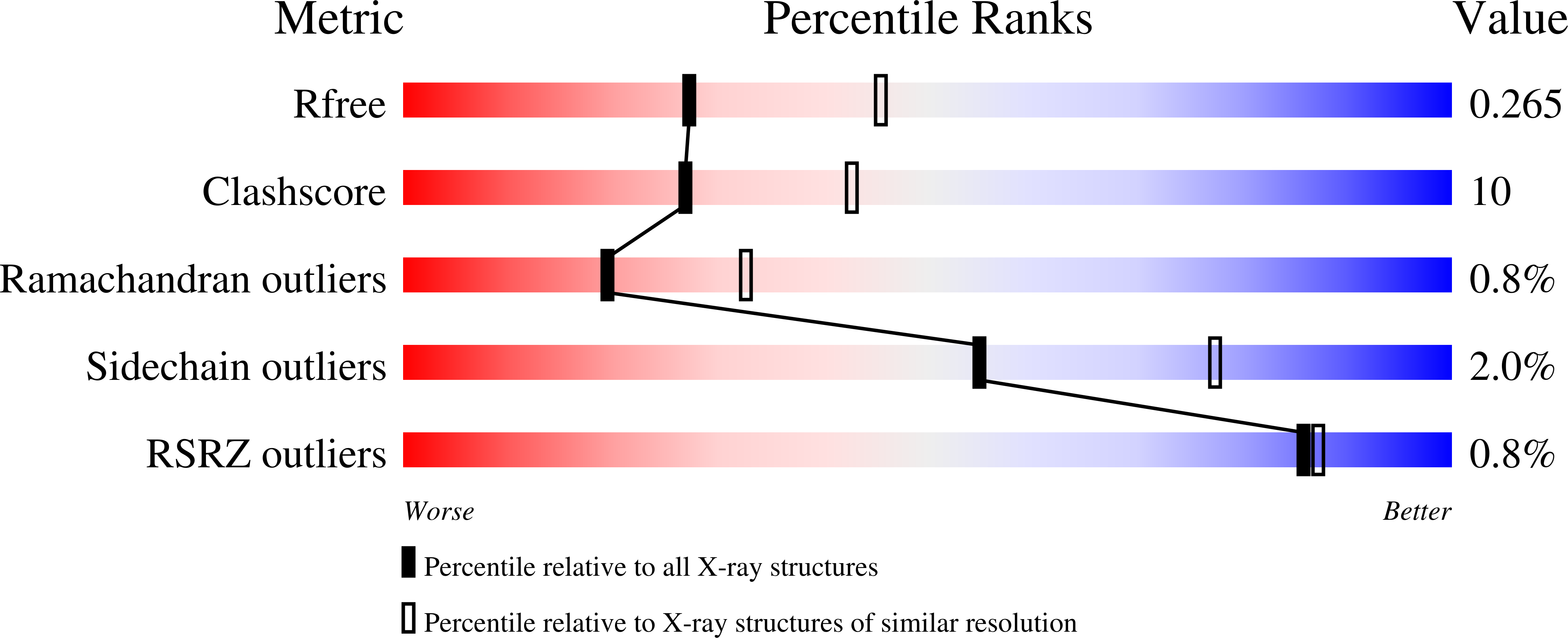Biocatalytic and structural properties of a highly engineered halohydrin dehalogenase.
Schallmey, M., Floor, R.J., Hauer, B., Breuer, M., Jekel, P.A., Wijma, H.J., Dijkstra, B.W., Janssen, D.B.(2013) Chembiochem 14: 870-881
- PubMed: 23585096
- DOI: https://doi.org/10.1002/cbic.201300005
- Primary Citation of Related Structures:
4IXT, 4IXW, 4IY1 - PubMed Abstract:
Two highly engineered halohydrin dehalogenase variants were characterized in terms of their performance in dehalogenation and epoxide cyanolysis reactions. Both enzyme variants outperformed the wild-type enzyme in the cyanolysis of ethyl (S)-3,4-epoxybutyrate, a conversion yielding ethyl (R)-4-cyano-3-hydroxybutyrate, an important chiral building block for statin synthesis. One of the enzyme variants, HheC2360, displayed catalytic rates for this cyanolysis reaction enhanced up to tenfold. Furthermore, the enantioselectivity of this variant was the opposite of that of the wild-type enzyme, both for dehalogenation and for cyanolysis reactions. The 37-fold mutant HheC2360 showed an increase in thermal stability of 8 °C relative to the wild-type enzyme. Crystal structures of this enzyme were elucidated with chloride and ethyl (S)-3,4-epoxybutyrate or with ethyl (R)-4-cyano-3-hydroxybutyrate bound in the active site. The observed increase in temperature stability was explained in terms of a substantial increase in buried surface area relative to the wild-type HheC, together with enhanced interfacial interactions between the subunits that form the tetramer. The structures also revealed that the substrate binding pocket was modified both by substitutions and by backbone movements in loops surrounding the active site. The observed changes in the mutant structures are partly governed by coupled mutations, some of which are necessary to remove steric clashes or to allow backbone movements to occur. The importance of interactions between substitutions suggests that efficient directed evolution strategies should allow for compensating and synergistic mutations during library design.
Organizational Affiliation:
Department of Biochemistry, Groningen Biomolecular Sciences and Biotechnology Institute, University of Groningen, Nijenborgh 4, 9747 AG Groningen, The Netherlands.
















